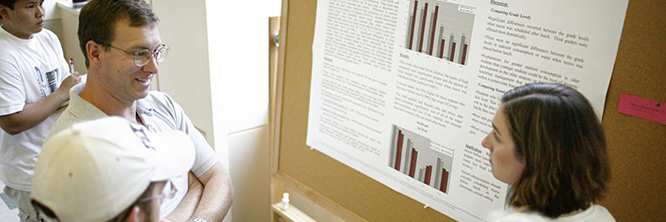Bishop Spring, the Zooarchaeology and Geoarchaeology of an Early Holocene Deposit, Quincy, WA
Document Type
Poster
Event Website
https://source2022.sched.com/
Start Date
16-5-2022
End Date
16-5-2022
Keywords
Bone, Dating, Staining
Abstract
Bishop Springs was trenched in the early 1970's to increase water flow for livestock. Saturated sediments, with fragmented bone and stone tools, are two to three meters deep. Climate models suggest the spring was active during the early Holocene, but that current conditions are determined by active recharge from irrigation run off. The geological and archaeological potential of the site have been summarized in a PhD dissertation and a MS thesis. Analysis of samples of faunal remains have been completed as part of one professional study and one student project. This presentation updates the identification and taphonomic analysis of the animal remans. We characterize the fragmentation and condition of bone and reevaluate the size class of animals based on small fragments of large elements of bone (limbs and vertebrae). Unburned bone samples have been tested and do not contain sufficient collagen for radiocarbon dating. New radiocarbon dates for burned bone suggest that some of the sample is 12,000 year old. A pilot study of the magnetic susceptibility (MS) of sediment and bone from the site sample supports interpretation of site formation and the relative age of the unburned bone sample. We compare MS measurements for: 1) sediment samples by levels/strata, 2) sediments adhering to bone, and 3) bone with red, green and black staining. Our study helps to establish the significance of the site and needs to both investigate the deeper portions of the site and protect the site setting.
Recommended Citation
Brewerm, Corwin and Perini, Izzabella, "Bishop Spring, the Zooarchaeology and Geoarchaeology of an Early Holocene Deposit, Quincy, WA" (2022). Symposium Of University Research and Creative Expression (SOURCE). 20.
https://digitalcommons.cwu.edu/source/2022/COTS/20
Department/Program
Anthropology & Museum Studies
Bishop Spring, the Zooarchaeology and Geoarchaeology of an Early Holocene Deposit, Quincy, WA
Bishop Springs was trenched in the early 1970's to increase water flow for livestock. Saturated sediments, with fragmented bone and stone tools, are two to three meters deep. Climate models suggest the spring was active during the early Holocene, but that current conditions are determined by active recharge from irrigation run off. The geological and archaeological potential of the site have been summarized in a PhD dissertation and a MS thesis. Analysis of samples of faunal remains have been completed as part of one professional study and one student project. This presentation updates the identification and taphonomic analysis of the animal remans. We characterize the fragmentation and condition of bone and reevaluate the size class of animals based on small fragments of large elements of bone (limbs and vertebrae). Unburned bone samples have been tested and do not contain sufficient collagen for radiocarbon dating. New radiocarbon dates for burned bone suggest that some of the sample is 12,000 year old. A pilot study of the magnetic susceptibility (MS) of sediment and bone from the site sample supports interpretation of site formation and the relative age of the unburned bone sample. We compare MS measurements for: 1) sediment samples by levels/strata, 2) sediments adhering to bone, and 3) bone with red, green and black staining. Our study helps to establish the significance of the site and needs to both investigate the deeper portions of the site and protect the site setting.
https://digitalcommons.cwu.edu/source/2022/COTS/20
